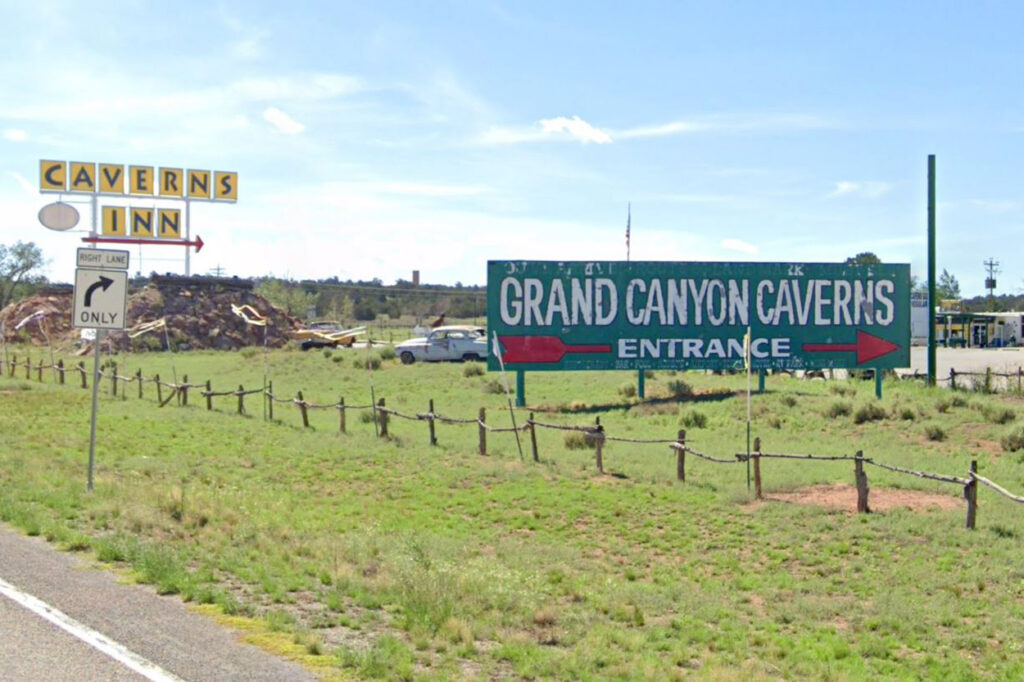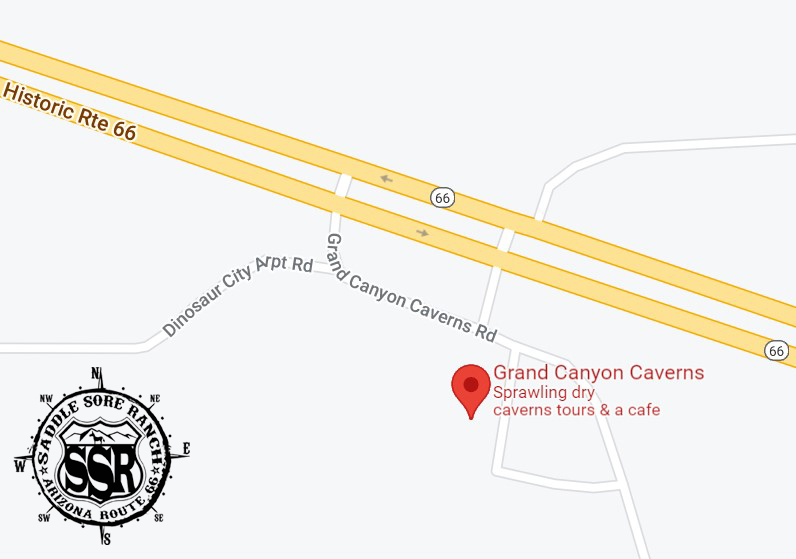ARIZONA ROUTE 66 IN ORDER FROM EAST TO WEST
Lupton – Houck – Sanders – Chambers – Petrified Forest / Painted Desert – Holbrook – Joseph City – Winslow – Meteor City – Meteor Crater – Winona – Flagstaff – Bellemont – Williams – Ash Fork – Seligman – Grand Canyon Caverns – Peach Springs – Truxton – Crozier – Valentine – Hackberry – Antares – Kingman – Golden Valley – Oatman – Golden Shores – Topock

In 1927, Walter Peck discovered the caverns by chance. After a failed search for gold, he opened the caverns to travelers and began charging 25 cents admission, which included a view of a purported caveman. In the 1960s the “caveman” was shown to be the remains of two inhabitants of the area, who had died in the winter of 1917–1918. Part of a group of Hualapai Native Americans harvesting and cutting firewood on the caverns’ hilltop, they were trapped there for three days by a snowstorm. Two brothers died from influenza, and since the ground was frozen solid with and covered in snow, they were buried in what was thought to be only a 50-foot (15 m) hole, as returning them to their tribal headquarters in Peach Springs risked spreading the flu.

In 1935, the Civilian Conservation Corps and the Works Progress Administration made an agreement with Peck to build a new entrance to the Caverns. In 1962, another entrance was built by blasting a 210-foot (64 m) shaft into the limestone and installing a large elevator. At that time the natural entrance was also sealed off at the request of the Hualapai Indians as it was considered a sacred burial place. Near the natural entrance, the skeletal remains of a Paramylodon harlani (Glossotherium harlani) were also found. This giant and extinct ground sloth lived during the Age of Mammals around 11,000 years ago, when the woolly mammoth and saber tooth cat roamed North America.
Peck had named the caverns Yampai Caverns, with the name being changed several times. Up until 1957, they were known as The Coconino Caverns. From 1957 through 1962, they were known as The Dinosaur Caverns. In 1962, they were renamed The Grand Canyon Caverns.
During the 1962 Cuban Missile Crisis, the U.S. government designated the caverns as a fallout shelter, with supplies for 2,000 people. These supplies remain in the caverns.
In 1979, a cosmic ray telescope was installed at Grand Canyon Caverns, 126 feet (38 m) below the surface. (source: wikipedia)

Proceeds from our gift shop help with the expenses of maintaining the website. Thank you for taking the time to look around.
***Links provided on this site to Chambers Of Commerce, Route 66 Historical Associations, Visitor Centers, Points Of Interests, etc are provided for your reference and convenience only. They are not affiliated with this site in any way, unless otherwise noted. This site is independently owned, operated and funded as a community service by Rob Borden, the Saddle Sore Ranch, and thru any donations we receive. Donations can be made via PayPal to LiveFromSSR@gmail.com or via Venmo to @SaddleSoreRanch


Click the map image below to open Google Maps of this area.



